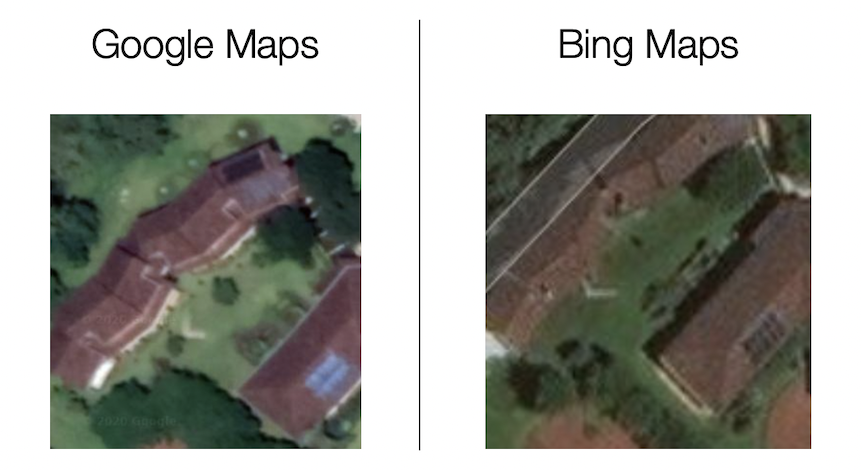Guest Post: Andrew Galen, Cofounder, AVOLTA Energy
How do you provide the best customer response when your originators and your designers can’t meet to talk things over at the water cooler? At AVOLTA, we’ve been doing just that for months. We’ve learned some helpful hacks and a few best practices, which we are happy to share with you.
Headquartered in San Jose, Costa Rica, AVOLTA is a regional solar installer serving Central America. It can be difficult to find experts in solar PV system design in Central America and especially difficult to find enough people experienced with cutting-edge tools like HelioScope.
Six months ago, we set out to find outsourcing partners who could deliver high quality preliminary designs using HelioScope. We settled on a few partners in India and Pakistan. Overall, we’ve been extremely happy with how our remote partnerships have worked, but there was a steep learning curve.
Like many of you, we have physically cleared out of the office and moved all of our staff to work-from-home. But we have not suffered much disruption in our internal processes. This is because we’d already implemented many strategies to ensure that our originators communicate requirements efficiently and effectively to our designers and engineers, even though they are halfway around the world.
Though your teams may only be separated by a few miles, we hope that you’ll find some of these strategies helpful during the next few months. We also hope you won’t need them for much longer than that.
TIP 1: Don’t ding Bing - sometimes Bing maps images are better than Google maps
As part of each HelioScope request, our originators include a screen shot of the project location with roofs marked or circled (and of course, a latitude and longitude or pin). It turns out that there are many times when the Bing satellite image (or other free imagery) is much better than Google.

In this case, with Bing, it is much easier to see where the roof peaks and where each separate roof starts and ends. In fact, what looks like it might just be a skylight on Google Maps are actually solar panels, clearly visible on Bing.
When does the difference really matter? We see the biggest difference when trying to position keep-outs, especially on commercial and industrial installations. When paired with a few good site photos, a clearer satellite picture can make a big difference in the detail that our designers can incorporate. It is those details that impress customers in a crowded pile of preliminary proposals.
TIP 2: Strike the right balance between spending too long organizing a request, and failing to convey the important information a designer needs
There needs to be a balance between the amount of information shared and the time it takes to get all of that information organized. We found that for preliminary HelioScope work, we actually needed to share less information than we initially thought. Here are a few of the things we incorporate in every request that the origination team sends to our designers:

We found that focusing on three particular areas got us far enough for the majority of preliminary proposals:
- Provide lots of quality images and notes directly on the images. We often include Google StreetView (or similar) images along with any photos from the site visit. Then, allow your designers to do their job.
- Require designers to incorporate customer and project information into project names and design names in HelioScope using a pre-agreed format. This is especially important if you use HelioScope’s API or other similar features to import the data into another program. We like to include annual kWh of generation right in the design name as well.
- Over time, we’ve typically communicated system size in one of two ways: fill the roof/area completely or target kWh/year (and sometimes a combination of both). Except where there is a regulatory reason to focus on DC Nameplate, we’ve found that focusing on kWh/year allows the originator do their initial sizing with an eye toward the customer’s utility bill or consumption pattern without worrying too much about design. The designer can then optimize the system around that target using HelioScope.

TIP 3: Make your priority projects clear and then re-prioritize with every new request
When everyone is together, priorities can be easily communicated between teams. In fact, you've probably noticed that sometimes the whole business feels the energy around a new opportunity, and nothing has to be said at all. But, when everyone is working in a different location and with different time zones, conveying priorities needs to be a more formal and diligent process.
We considered a lot of different strategies, ranging from simple shared Excel files to fancy CRM integrations. We even checked out different project management platforms that were not part of our core business processes. In the end, the solution we settled on, and the one that has worked especially well for us, has been a list. It sounds so simple, because it is!
With every new request sent from our originators to our designers we update and re-share our priority list internally. We mostly send the list by e-mail, but it works the same if you use Slack or Teams. With each request, the entire list is updated, and some projects move up and others move down. But there is never any doubt where each project sits relative to the others.
Firms have to adapt to the new normal
Working from home is going to be the new normal for the foreseeable future, and every company is going to have to adapt. At Avolta we already figured out how to function at a distance. The combination of great technology and best practices will let the wider solar industry continue to grow and serve clients even through this difficult time.

About the guest author: Andrew Galen is the Co-founder of AVOLTA Energy and GrupoCTW. GrupoCTW is committed to bringing world-class, sustainable, and financially sound solutions to Central America. Through investments in the more efficient use of resources and more sustainable creation of electricity and usable water, Avolta is helping clients in Central America be more environmentally friendly and globally competitive.


